We are shipping for Saturday delivery! All orders placed today will ship today unless you provide a future ship date in the notes box!
100% Customer Satisfaction Guaranteed | Shop Our Bestsellers!
Call or email us with any questions at (718) 389-0985 or info@HeritageFoodsUSA.com!
All our Provisions ship FREE!
"Priorat, near the Mediterranean coast of Spain and a stone’s throw from Barcelona, produces wines with dark fruit flavors, spice, bold complexity and ample alcohol. To compete with reds like these, the food alongside must take no prisoners.It would have been simple enough to sear some rib-eyes, lamb chops or lusty sausages. But I looked across the Mediterranean to North Africa and came up with a tagine in which chicken is coated with robust spices and becomes more than mere white noise. Eggplant and olives round out the dish, and a splash of sherry vinegar brightens the sauce.If you have yet to equip your kitchen with a genuine terra-cotta tagine, you can cook the dish in a covered sauté pan or a fancy-pants tagine of enameled cast iron." — Florence Fabricant
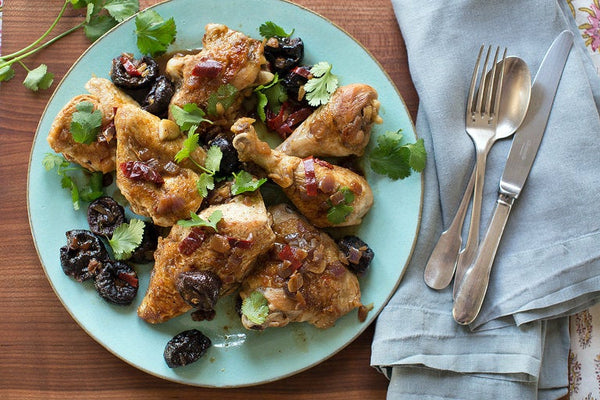
"Start with a chicken, cut up and ready to sauté, and it’s easy to follow many routes to a finished dish. Here the meat is bathed in a sauce with a musky, chile-fueled bite that is made to behave by plump, sweet prunes. But the dish could also use a vehicle for its abundant, complex sauce. Mashed white or sweet potatoes, soft polenta, tender white beans or plain steamed rice would all be suitable choices." — Florence Fabricant
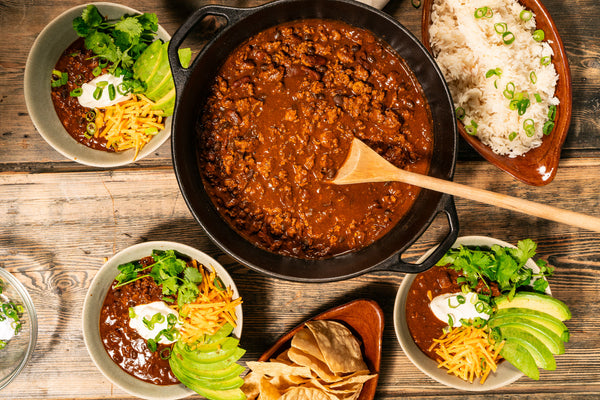
As far back as 1529, records of chili seasoned stews have been prepared by the Aztecs in Tenochtitlan, now modern day Mexico City. The term “chili con carne," combining the Nahuatl “chili” and spanish “con carne” or with meat, find its origins from writings about the Mexican-American war in 1857, where the army would prepare dried beef, suet and, and dried chilis and salt and dry into bricks to preserve and transport easily and then rehydrate in pots with water to simmer and serve to the soldiers.

This recipe sits among the greatest in memory. Legend says it goes back to when contemporary France was ruled by the Gauls, but curiously, written record of it only dates back to the early 20th century. Julia Child championed the recipe for the American audience in the 1960s.
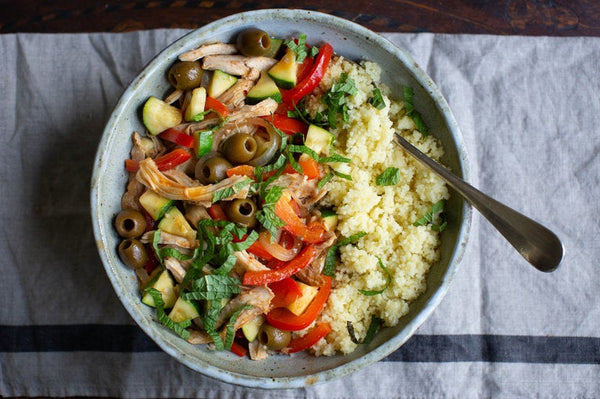
Just as a little saffron, garlic and paprika can conjure the flavors of Spain, so too will preserved lemons, cumin, mint and olives evoke Morocco. This salad and the accompanying couscous can be doubled or tripled to anchor a generous buffet. Both can be assembled a couple of hours in advance and set aside on a kitchen counter. Serve them at room temperature. — Florence Fabricant
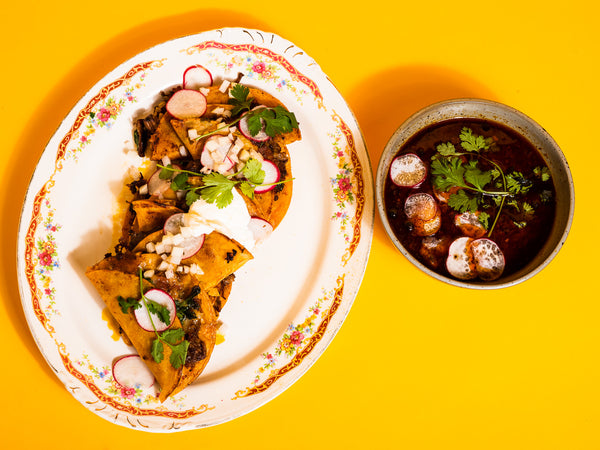
Birria is a heartwarming, deeply flavored stew hailing from the Mexican state of Jalisco — also home to tequila. The dish begins with marinating meat in adobo, a vinegar based liquid spiked with chilies, alliums, herbs, and spices. The resulting stew is often served by placing a ladleful of meat into a tortilla with a bowl of consomé (the cooking liquid) on the side. Like with any traditional technique dating back centuries, there are several ways to prepare birria.
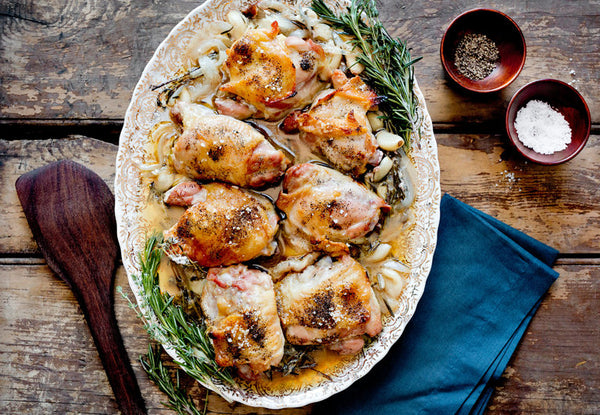
The ease and deliciousness of this recipe, from the chef Nancy Silverton's cookbook "Mozza at Home," deserves to be emphasized. Though you need several hours of refrigeration to allow the chicken skin to dry out, which makes it crisp, you can be flexible about it; do what’s convenient. No matter what, just be sure to pat the skin dry with paper towels. You may also find the final run under the broiler unnecessary. Use your judgment. And also consider swirling in a good splash of white wine or chicken stock to the juices in the baking dish before spooning them on the chicken. — Florence Fabricant

This is a version of the traditional Japanese comfort food Oyakodon, a chicken and egg rice bowl. Heritage chickens are exceptional when cooked low and slow, and this traditional braise celebrates the qualities that make these heritage chickens so unique.
© 2025, Heritage Foods Powered by Shopify
